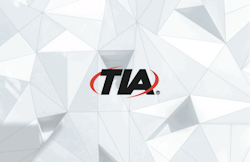Trump’s tariffs draw concerns from the Telecommunications Industry Association (TIA)
On Saturday, the Telecommunications Industry Association (TIA) cited concerns about the Trump administration’s invoking tariffs on Canada, Mexico, and China.
Telecommunications Industry Association (TIA) SVP Government Affairs, Melissa Newman, said in a statement that while the organization supports the Trump Administration’s goals to stop fentanyl smuggling and to enhance the U.S. economy by addressing unfair trade practices, it is “concerned that President Trump’s decision to unilaterally raise tariffs on products coming from Canada, Mexico, and China without a full analysis of the effect these higher duties could result in, including higher prices for American consumers and retaliatory actions against American businesses.”
President Trump implemented a 25% additional tariff on imports from Canada and Mexico and a 10% additional tariff on imports from China. The new import fees will take effect on Tuesday, Feb. 4.
However, Trump agreed on Feb. 3 to delay the tariffs on Mexico for one month after the country’s president decided to deploy 10,000 troops at the border to curb the flow of illegal drugs into the United States.
He cited the need to hold these countries accountable for their promises of halting illegal immigration and stopping poisonous fentanyl and other drugs from flowing into the United States.
Ensuring broadband growth
One of the key objectives TIA and other telecom industry groups drive is the continual expansion of broadband.
According to fellow industry association USTelecom, traditional telcos invested nearly $95 billion last year in U.S. communications infrastructure, committing over $2 trillion of private capital since 1996.
But the industry is not stopping there.
While critics argue that the program has been bogged down by entirely unrelated political objectives and social mandates, the broadband industry is amid one of its most significant expansions via the $42.5 billion Broadband Equity, Access and Deployment (BEAD) Program.
As an advocacy group for the telecommunications industry, the TIA wants to ensure that Trump’s actions don’t delay new broadband rollouts.
“The telecommunications industry is in the process of broadband deployments designed to connect all Americans to secure, reliable internet, and we worry that this decision could unintentionally reduce the efficacy of federal investments in these critical deployments at the taxpayer’s expense,” Newman said. “We look forward to working closely with the Trump Administration to solve these important issues to ensure the U.S. telecommunications industry maintains the necessary conditions to do its duty and keep America connected.”
Widespread criticism
Trump’s move is not just relegated to the telecommunications industry.
It has drawn criticism from other trade industry groups in different segments, including the automotive, consumer goods, farming, and plastics industries.
According to IndustryWeek, which, like Lightwave+BTR, is an Endeavor Business Media publication, the move has also drawn fire from the National Association of Manufacturers, MEMA, the Vehicle Suppliers Association, the Consumer Brands Association, and other organizations and analysts.
Also, the Plastics Industry Association warns about the potential impact on manufacturing and jobs.
For related articles, visit the Broadband Topic Center.
For more information on high-speed transmission systems and suppliers, visit the Lightwave Buyer’s Guide.
To stay abreast of fiber network deployments, subscribe to Lightwave’s Service Providers and Datacom/Data Center newsletters.
About the Author
Sean Buckley
Sean is responsible for establishing and executing the editorial strategies of Lightwave and Broadband Technology Report across their websites, email newsletters, events, and other information products.


